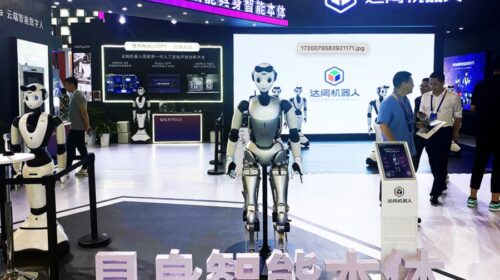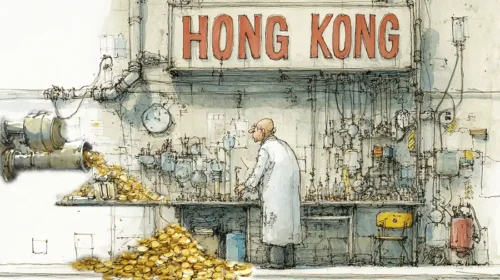SPONSORED: IoT Platforms Offer Greener Future for Industrial and Commercial Scenarios

IoT products and services can help industrial and commercial users better manage energy consumption and meet ESG goals
The following article has been written with material supplied by Tuya
The global fixation on carbon neutrality has put energy conservation and emissions reduction in the spotlight all the way down to the household level. At the same time, big progress is also happening in industrial and commercial scenarios.
Market research firm CCID Consulting estimates industrial use accounts for as much 70% of carbon emissions, followed by construction and transportation. Among other fields, carbon emissions from energy consumption by individual buildings is still on the rise. Against such a backdrop, energy conservation and emissions reduction in industrial and commercial scenarios will inevitably become the key to achieving carbon neutrality.
Tuya (TUYA.US; 2391.HK) operates a global internet of things (IoT) development platform that has made strong achievements in energy conservation and emissions reduction in home scenarios, promoting energy conservation and introducing innovative emissions reduction models in such scenarios. It is also a strong player in larger scale industrial and commercial scenarios.
Industrial scenarios: combining emissions reduction and efficient production
“Green development” has become an important global issue, but the path to achieving that in industrial scenarios is far from smooth, and can even be difficult.
Industrial enterprises face two main hurdles to such development: they don’t know how to make the “green transition” due to lack of information; and they can be reluctant to sacrifice their overall development in order to meet emissions reduction standards. The bottom line is it’s often difficult, if not impossible, to balance efficient production and “green development.”
IoT developers have piloted cases in the industrial field that could bring new ideas for industrial energy conservation and emissions reduction.
For instance, Tuya helps industrial clients obtain real-time data on electricity usage, including load rates, power factors and peak or valley power consumption, through smart industrial solutions with its industry equipment management system and power distribution energy efficiency platform. Such efforts can help enterprises reduce their energy consumption and costs.
Tuya also provides a comprehensive energy management platform for factories, covering centralized control, station and equipment management, allowing companies to manage their energy use in a single network to achieve efficient production, energy savings and emissions reduction.

A 40,000-square-meter (430,000-square-feet) manufacturing workshop in China’s Hubei province contains 503 sets of 120 W lamps, collectively consuming about 530,000 kWh of electricity annually. Production of that electricity requires consumption of 138 tons of standard coal, generating more than 400 tons of carbon dioxide.
Use of a lighting control module developed by industrial lighting company Bilinwei, combined with Tuya’s commercial lighting capabilities, has intelligently transformed the lighting system in 10 days through use of area, dimming, scene, automatic and timing controls for workshop lighting. Together with the use of other intelligent control functions, the workshop was able to achieve a 65% reduction in its lighting energy consumption and carbon emissions, reducing its carbon emissions by 270 tons in one year.
Commercial scenario: saving energy and reducing emissions using SaaS applications
In addition to energy saving and emissions reduction in industrial scenarios, Tuya also has an excellent record for carbon reduction in other scenarios.
Its SaaS and other solutions for many scenarios promote energy conservation, emissions reduction and sustainable development in commercial scenarios such as communities, offices and hotels, with more cases being continually added.
One example in the city of Shenzhen saw Tuya joined hands with Arramr Lighting to perform a smart upgrade of its Xtep flagship store. Both parties help Shenzhen Xtep stores use astronomical clocks for automatic dimming and switching control, so that store lighting can intelligently adjust to the appropriate brightness based on peaks and valleys in customer traffic.
The two parties have also built rich lighting scenarios and centralized management systems allowing customers to interact with the lights, scenery and other smart devices, improving consumers’ shopping experience in the store. The project resulted in a 21% savings in energy consumption compared with the original layout.
For office parks, Tuya and CYG SUNRI jointly created a “Zero-Carbon Management Solution for Smart Parks,” refining energy management through use of smart lighting, smart sockets, smart doors, window monitors and IoT platform capabilities. Energy saving takes place at the most basic level, with each air conditioner, lighting fixture and electrical socket promoting lower usage and subsequently reduced emissions.
Data shows the project has save 1,588 tons of carbon emissions for the park, equivalent to planting 1.5 million square meters (371 acres) of forest on the earth, an area equal to about 210 football fields. In the future, the park is expected to save about 400,000 kWh of electricity and 288.46 tons of carbon emissions annually.
Tuya has also launched a smart building solution – Tuya Building SaaS. Using advanced computer control, management software and energy-saving system programs, a building’s electrical machinery and equipment can be fully coordinated, ensuring a comfortable working environment in the building while also saving energy, maintenance and management workload and operating costs.
Future vision: using IoT efficiency to realize new business value
In the ESG era, an enterprise’s energy saving and emissions reduction capabilities have become important criteria for judging its sustainable development. Objectively speaking, businesses can’t survive on ideals alone. Only after ESG is no longer a concept but instead becomes a real long-term strategy with healthy fundamentals can it be implemented over the longer-term. How to do that has become a focus for many enterprises.
Tuya is trying to take energy saving and emissions reduction beyond the scope of simple morality. It is promoting the implementation of energy saving and emissions reduction in household, industrial, commercial and other scenarios using intelligent methods, and then extending that to innovating production methods to create potential new business models that are scalable and recyclable.
Tuya uses a variety of enabling scenarios and strong technical support so that all types of customers can easily and actively save energy without affecting their natural “pace” and life rhythm. Its environmental protection and sustainable development efforts aim to balance competing demands between progress and profits.
The Bamboo Works offers a wide-ranging mix of coverage on U.S.- and Hong Kong-listed Chinese companies, including some sponsored content. For additional queries, including questions on individual articles, please contact us by clicking here.
To subscribe to Bamboo Works free weekly newsletter, click here






